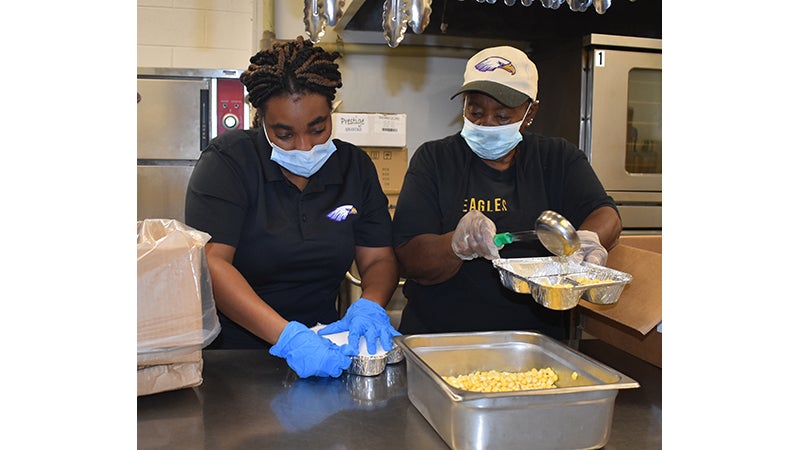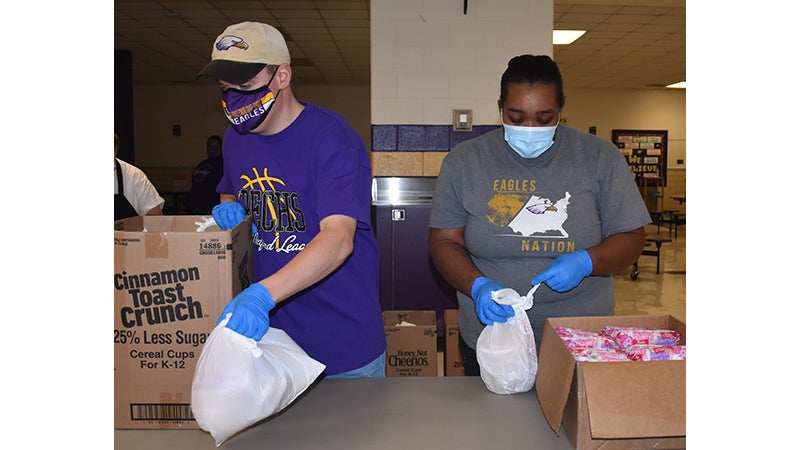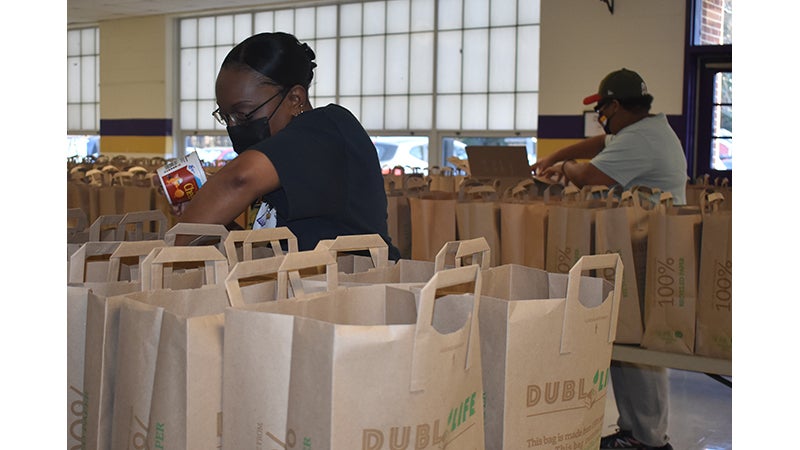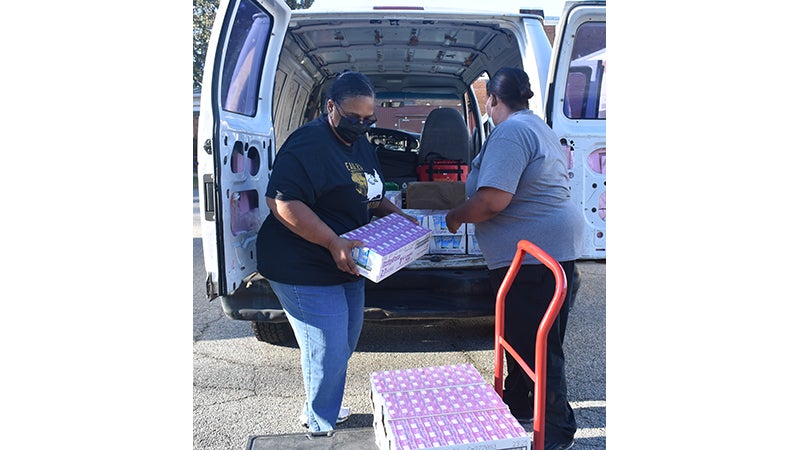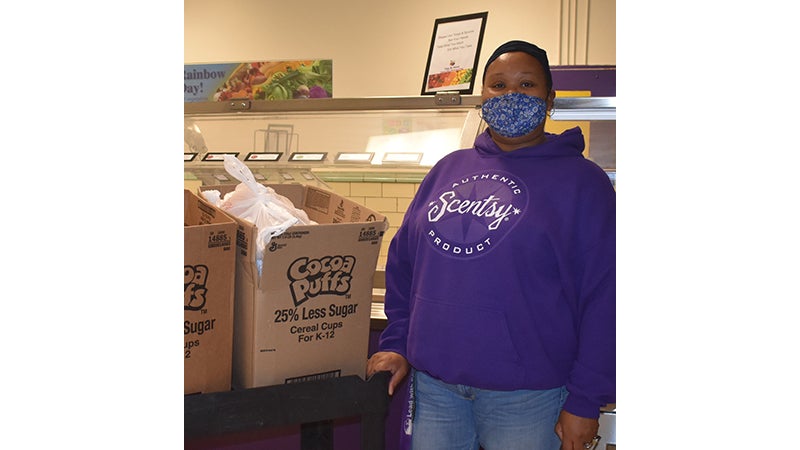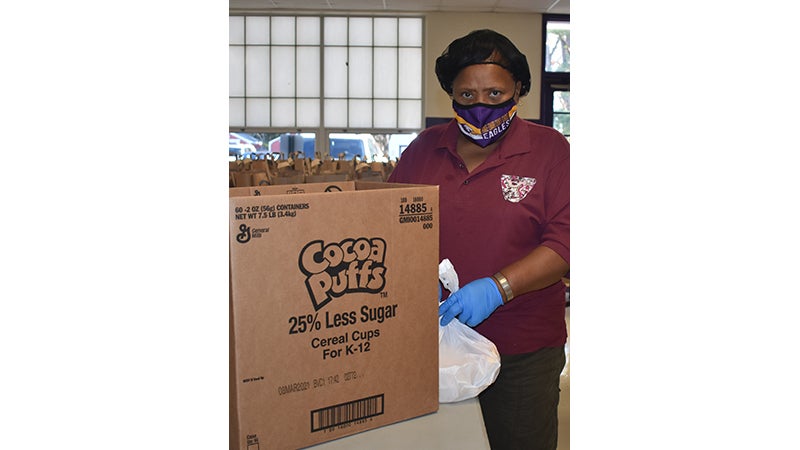Food service staff provides lifeline to families
Published 6:00 am Thursday, November 19, 2020
|
Getting your Trinity Audio player ready...
|
This time last year the Prince Edward County High School cafeteria was bustling with students ready for a well-deserved lunch break in the middle of the school day.
In the midst of the COVID-19 pandemic, the lunchroom now sees no students, but the building remains a hub of activity. The cafeteria is now the headquarters for the Prince Edward County Public Schools (PECPS) food service workers who work around the clock and behind the scenes to provide free meals for students.
And in a county where 68% of families are identified as low-income, these vital staff members are not unlike guardian angels to local children.
When the school first closed in the spring and food distributions began, workers were preparing and packaging meals for students and taking those bagged meals to four different distribution sites in the county.
The process has evolved a lot since the start of the pandemic, especially now that students in the fifth grade and below have been split into two groups and returned for in-person classes four days a week.
Food workers now work out of the high school to package 400 bags of meals for weekly curbside pickup. Families come to the school Wednesdays from 7 a.m. to 5 p.m. to grab their bags for the week.
The curbside bags, according to PECPS Food Service Supervisor Bruce Davis and Food Service Manager NaTasha Clark, are filled with enough food to last students about one week. Families receive a breakfast bag that normally consists of cereals, donuts, pastries, microwavable sandwiches, juices, whole fruits, applesauce and/ or fruit cups. The bags also contain trays of lunch food that are frozen and labeled, containing anything from stuffed shells with broccoli, lasagna, burgers and more.
In addition to the seven days of breakfasts and lunches, the school will also sometimes put together produce bags for families to take home consisting of fresh vegetables, as well as surprise bags with items like frozen chicken, sweet potatoes, apples, cauliflower and squash so families can cook a meal together as a family.
Davis said the school recently obtained a $15,000 grant from No Kid Hungry to purchase two hot sealing machines that can seal meals in TV dinner-style containers so food can be placed directly into the microwave or oven for reheating.
In addition to preparing 400 breakfasts and 400 lunches for Wednesday’s distribution, food workers now also make approximately 300 breakfast and lunch meals for students who are in school Mondays, Tuesdays, Thursdays and Fridays.
The efforts of the 24 food service staff have produced approximately 135,000 meals for students since the coronavirus health crisis.
The emotional strength of the workers is evident at each food distribution. Before the coronavirus, food service employees saw students each week day, serving as smiling faces in the lunchroom, knowing students by name and asking how they were doing.
Although many students do not accompany their parents to food pickups, the children who do come are often eager to poke their head out of the window and connect with the staff, confiding in how their online classes are going and how much they miss their peers.
“I do miss my kids a lot, because I call them mine,” Clark laughed.
The PECPS food service staff, according to Clark, also began early on in the pandemic to make special deliveries via van or bus to children who had difficulties making it to the distribution sites.
Clark recalled a day in March when she discovered some children were walking three miles to their distribution site in order to receive food for the week. Other students were crossing train tracks or even riding lawn mowers to get to the pickup sites themselves.
“I just found out where they lived and started carrying food to them and letting them know, and that’s what we’ve been doing ever since.”
It can be difficult at times to witness firsthand the fact that some school children would simply go hungry without the meals provided by PECPS.
“I’ve seen one lady who came to pick her food up with her child and they actually pulled up in the parking lot and started making sandwiches right then,” Clark tearfully recalled. “It bothers you.”
Davis said on some days, families have called the school and asked for help as they had run out of meals and had nothing to eat.
“We made meals that day and took them over there, because who wants to see a child go hungry?” he asked.
But while being on the frontlines means these workers must stare the threat of child hunger in the face, it also provides an immense joy in being able to see children receive meals. For Clark, it almost feels like being a guardian angel.
“I enjoy it, making sure they get what they need,” she said. “You see the good in it because you see the smiling faces.”
Davis said the work and sacrifice of food service workers can sometimes go unnoticed, but the pandemic has in some ways brought these essential workers to light. After all, it’s much easier to learn with a full belly.
“People forget,” he said. “Transportation gets them here, we feed them, now you can teach them.”
Clark and Davis stressed that the school does not take down names of those who receive the food. They don’t take pictures of those in the line. The food distributions are all about helping families in a time of need. And as all children at PECPS will now receive free meals in school regardless of income, it just makes sense to stop by distributions and take advantage of the federal program, even if it helps just a tiny bit.
“We’re here to help you,” Clark said. “We’re not here to embarrass you. We try to make sure that you and your kids can have something to eat.”
It’s a tough job, but just as rewarding.
“What’s rewarding is knowing they got something and I did my part,” she added. “I gave them something.”


